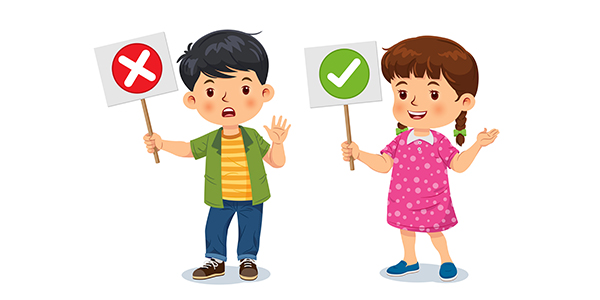Teaching Children about Good and Bad Touch

With the news about a group of young boys being sodomised and groomed in Malaysia and also a bus driver who is having a crush on a 9-year-old, I sometimes wonder how to educate kids about the right and wrong touch?
This is in view of each family having different understanding of touch and different boundaries when it comes to touch. For example, some families hug each other and some families do not.
Recently, my friend told me about her daughter who has been getting urinary infection frequently. Little did she know that in her daughter’s kindergarten, another one of the little girls has been inserting her finger into the daughter’s vagina and despite her daughter pushing the little girl’s hand away, the little girl still attempts it every time.
My friend spoke to the teacher and they warned the girl not to do it anymore but has anyone ever thought where did a 5-year-old girl learn to finger another person? Where did she pick up this action from? Is there someone grooming her?
Since we cannot stop the action of others around us, we can only educate our children on differentiating between positive touch and negative touch.
Below are some resources that can help parents on teaching children about the different types of touches:

• Children Books
• Websites (The American Academy of Pediatrics also has additional information and articles)
• Toy Anatomy Human Kit
• Activity books and coloring books
• Story books
Besides that, having a conversation with your child on this matter is also essential.
The conversation that parents should have with children includes:
1. Teach children the anatomical names of body parts

Teaching children the anatomical names of private parts equip them with the vocabulary to communicate about their body.
2. Teach children about body privacy

It is important to teach children about body parts that should not be touched, photographed or shown to other people. An example that is easy for children to understand is the swimsuit rule. Swimsuit Rule are those private body parts covered by a swimsuit that no one should touch or take pictures of.
It is also necessary to teach children the exception to the swimsuit rule such as when parents need to change a baby’s diaper or when a child goes to the doctor’s office for a check-up.
3. Start conversations at an early age

Talk with children about their bodies and the sensation that they feel during everyday activities. This will help create an environment where a child feels comfortable talking about their bodies with their parent.
4. Encourage open communication

Creating a safe and open environment is another aspect of helping a child discuss his or her body. Often times, sexual predators will threaten or discourage children from sharing information. It is important to let your child know that he or she does not need to keep secrets from you.
5. Discuss more than stranger danger

We often teach our children about strangers and the danger of getting in a vehicle or talking with someone they do not know, however, 90% of sexual abuse cases are committed by someone the child knows.
Be mindful of instances that your child may be one on one with another adult and try to avoid situations where your child may be alone with an adult in a private setting.
6. Teach children what to do if someone tries to use bad touch

Teach your child to say no and to yell for help when they are touched inappropriately. Encourage your child to run to a trusted adult. If at a friend’s house or away from home, the child can call his or her parent to pick them up immediately.
Let us all be safe than sorry!
Reference:
1. UTMB Health. 7 Tips for Teaching Children Good Touch and Bad Touch.







